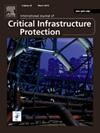Robustness evaluation method and defense strategy of electricity-heat integrated energy system
Abstract
Even though electricity-heat integrated energy systems (IESs) can improve energy utilization, the faults generated by extreme events can induce more complex and wider impacts. Therefore, it is urgent to study the effective defense strategies associated with electricity-heat IES. Considering the theory of complex networks, a dynamic model was established in this paper which comprehensively considered the actual operating characteristics and cascading failure process of the electricity-heat IES. The structural and functional robustness of the electricity-heat IES after failure was evaluated by link survivability, capacity survivability and power survivability. According to the post-disaster system robustness evaluation results and system characteristics without adopting the defense strategy, the critical links of the system were identified. Also, seven defense strategies were formulated based on the cascading failure mechanism of the electricity-heat IES. The testing network coupled with an improved IEEE118-node power grid and 23-node heat supply network was used to verify the effectiveness of the proposed defense strategy and to provide a theoretical basis for the resilience enhancement strategy and defense resource allocation of the electricity-heat IES.

 求助内容:
求助内容: 应助结果提醒方式:
应助结果提醒方式:


